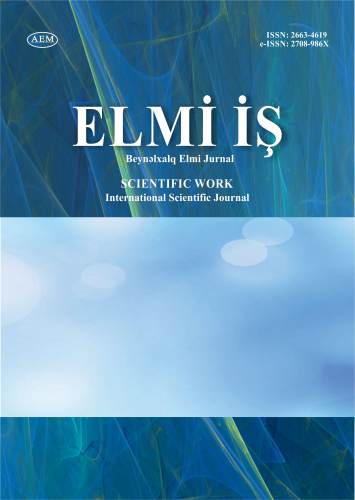Arxiv
2024 Ярослав Валентинович Пилипчук
Национальный педагогический университет имени М.П.Драгоманова
pylypchuk.yaroslav@gmail.com
КАБАРДИНЦЫ МЕЖДУ ТЮРКАМИ И РУССКИМИ
Ключевые слова: Кабарда, Малая Кабарда, Большая Кабарда, Идарей, Кайтукой, Крымское ханство, Русское государство, Большая Ногайская Орда, Малая Ногайская Орда, Османская империя
Kabarda between Turks and Russians
Summary
This paper is devoted to ethnic and political history of Kabarda in the XV-XVIII centuries. The resettlement of the East Circassians ancestors of the Kabardinians to the territory of the former Western Alanya can be dated to the time after the invasion of Timur 1395-1396. The design of Kabarda as a principality can be dated to the first half of the 15th century. The division of Kabarda into Idarey, Kaitukoi, Tlachtostan, Dzhelyakhstan can be dated to the first half of the XVI century. Kabarda in this era becomes one of the leading forces in the North Caucasus. Kabardinians competed with the Great Nogai Horde for control of the Astrakhan Khanate. Temryuk Idarov in 1563 attracted Nogais and Russians in his confrontation with the Ingush. Kabardians of Idarey to confront the Crimean Tatars and Kumyks in the XVI century. They were allies of Russians. The Idaroviches use the Russians in the confrontation with the Kumyks and Crimean Tatars, and they themselves take part in the Livonian War and the Russian campaigns against various Caucasian rulers. Ties of Kabardians and with Nogais are made. Kabardinians of Kaitukoi are guided by the Crimean Khanate and the Small Nogai Horde. Circassian expansion to the east leads to the fact that the Karachais, Balkars, part of the Ossetians and Chechens are under the control of the Kabardinians. In the struggle for hegemony in the North Caucasus, the Kabardinians in the 16th –17th centuries face with the kumyks. None of the parties managed to win a convincing victory and they mutually exhausted each other. Kabardinians were the guides of Russian influence in the 17th century in the North Caucasus and their helped Russians in the Russian-Qizilbash conflict in 1651–1653. Kabardinians actively support the Russians against the Crimean Tatars in the 17th century. The significance of the Battle of Kanzhal is greatly exaggerated in Kabardinian historiography. We can talk about the participation of 20 thousands of Crimean Tatars in the battle and the death of a fourth of them in the battle. The defeat of 1708 only temporarily weakened the Crimean Tatars. Crimean Tatars make revenge hikes to Kabarda and devastate the region in the 10-ies and 20-ies of XVIII century. The Kabardinians victories under Baksan (1729) and Chеrеshty (1731) helped to stop the Crimean Tatar advance. Kabarda there were the Baksan and Kashkatau parties oriented to the Russians and Crimeans in the 18th century. They sought to win over external forces in order to secure subjectivity in foreign policy relations. The anti-Russian position of the Kabardinians set up the construction by Russians of the Mozdok fortress.
Key words: Kabarda, Lesser Kabarda, Great Kabarda, Idarey, Kaitukoi, Crimean Khanate, Russian state, Great Nogai Horde, Lesser Nogai Horde, Ottoman Empire
MƏQALƏNİ YÜKLƏ
[410.38 Kb] (yüklənib: 36)
Baxış:
750

